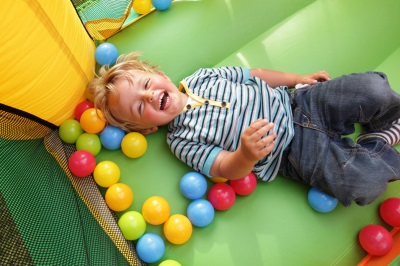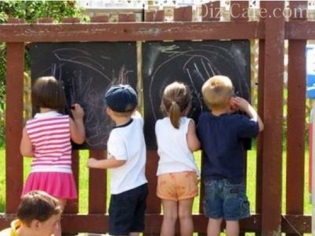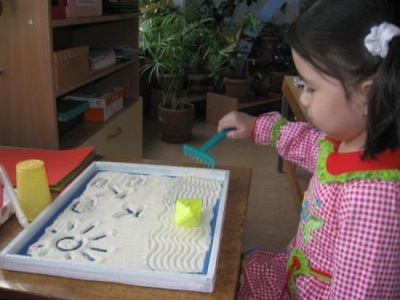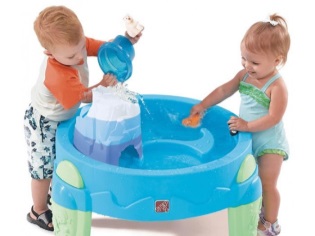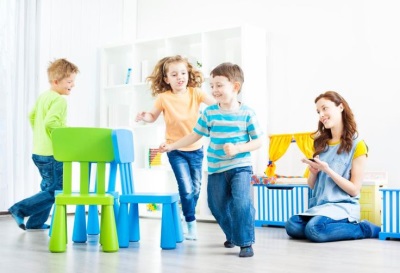Games and exercises for hyperactive children
To help the hyperactive children to be timely, experts advise using game therapy to correct them - the game treatment. After all, children at any age primarily love to play.
Types of remedial games
Correctional educational games for hyperactive children are divided into several types:
- Games on the development of attention.
- Games to relieve muscular and emotional stress.
- Management development games.
- Games that can secure the ability to communicate.
There are several requirements for them that must comply with all:
- All games parents begin to enter in stages, first begin to train one function. If the result is visible in games, then games from the next group are selected further.
- Play activity is carried out both individually with the child and with the whole family.
- Try to predict the child's overwork, for this purpose, at the time of switching attention to other objects.
- A hyperactive child needs control from an adult, so try to promptly introduce encouragement and punishment in games.
All game activity develops with the child. In 2 - 3 years, the baby can be very active, because during the day he has accumulated so much energy that it needs to be splashed out somewhere. Here it is just necessary to run, jump.

What should parents do to properly organize the play activity of the baby:
Try to play along to him. If the child is dancing and singing, then you can turn on the music and say that he is an artist performing for toys. Or if children run and jump all over the apartment, then you can play with them, introducing yourself as a hunter, and them as hares. The main task of the mother is to direct and organize the activity in time so that it is not aimless. At this age, games with plasticine, various cereals and water will be useful, of course, under the supervision of an adult.
Games for children of preschool age (4-5 years)
In this age category of children one can already include games for the development of one or another function.
Game "One, two, three speak!". An adult asks children simple questions, but they can be answered only when they hear the command: “One, two, three - speak!” Questions may be such: “Name a pet”; "What is color"; "What is this toy."
Very well relieve the stress of the game-etudes.
Game "Snowman". The child portrays a snowman - spreads his arms tense to the side, inflates his cheeks. The adult portrays the sun, which warms and strokes the child. Snowman conceals and slowly falls to the floor.
Game "Ball". Children present themselves as multicolored balloons. An adult depicts a pump, from the movements of which the balls inflate. Then comes the clap hands, balls burst and slowly fall to the floor.
Various games and attention exercises “This is superfluous”; "Find the differences in the picture"; "Touch a color or object."

Games for children of primary school age (6-7 years)
Exercise "Magic Ball". Trains self-regulation.The child during the game need to wind a ball of bright yarn on his hand. Children are told that the ball has extraordinary strength, and whoever reels it in hand quickly calms down.
Game "Draw a picture." An adult on the board draws any part of the picture. After that, the children take turns coming to the board and drawing the part that is missing in the picture. Thus a joint picture will turn out.
"Birdie". A child is given any fluffy and soft object, a fairy tale is told. The task of the child is to warm the bird with its warmth and breath.
The game "I scream - I whisper - I am silent." It is necessary to cut 3 palm prints from colored cardboard: red, yellow and blue. They will represent the command signals. An adult will raise a red palm - you can run, shout, make a lot of noise; yellow - you can quietly move and whisper; blue - children should stand still.
Here are some more interesting games and exercises: “Listen claps,” “Let's say hello,” “Waves,” “Talk with your hands,” “Games at your school desks.”
Hyperactive children all love to play with loose materials, it develops fine motor skills and calms the nervous system. Now there are a lot of various sets for games with sand and water, any of them can be bought in the store or made at home.
Exercises and sand games
Sand games relieve tension, develop psycho-emotional state, develop fine motor skills.
On the sand, children younger can draw pictures and figures, and older children can write letters with a stick or finger.
How are sand games being played?
At the first stage, children are introduced to the possibilities of sand, that it is dry, and if you add water, it is wet. It can grind between the palms, compress, sift, make snakes and handprints, depict animal tracks.
Very kids love the game "Secret"; "Find the treasure." The leader digs up toys, shells, pebbles in the sand, and the child, with his eyes closed, groping for the object, tries to find out what it is and where it is, without opening the fist, or simply dig it out.
Recommendations gaming activities for parents or what to do baby
If a child runs around the apartment without stopping, screams loudly, jumps on the floor, makes chaotic movements with his hands, feet and does not hear you at all, then catch him, hug him and invite him to play in a quiet voice.
You can ask to remember how screaming horse, cat, dog. Offer to show your hand, nose, knee. Older child offer to count from 1 to 20.
Play "Stand still," there are many variations of this game. For example, at the command “morning,” the child yawns, sips, “day” jumps, runs, “night” pretends to be asleep.
All children like the game "Robot": there are only two players here, the first driver depicts a robot that fulfills all the instructions and instructions, and the second, the owner, gives them. Agree with the baby that as soon as you hit his nose, he will immediately “turn off”. You can expand this idea by drawing a control panel (or use an unnecessary TV remote control). Press the button on the remote and say: "turn down the volume (turn off the sound, turn on the slowdown)." Let the child execute commands.
Offer the child to imagine that he is a lion on a hunt. At first he sits motionless in ambush, and then he jumps and catches somebody.
Ask the child to close their eyes and sit still, waiting for a certain signal. For example, when the bell rings for the second time, he must get up and put the toy on the shelf or collect the cubes from the floor.
Suggest a game "Hour of Silence". During this hour, all family members can only speak in a whisper. You can get a reward for this, because it is very difficult to do, especially for such a child.
Take a napkin (or a piece of wood) and toss up.Tell the child that while the napkin falls, you need to laugh as loudly as possible. But as soon as it falls, you should immediately shut up. Play with your child.
It is better to teach your child a tiny bit so that when you place your hands, he would run into your arms (I know that many parents do this). If this hug will be pleasant, by 3-5 years the habit will remain. Therefore, place your hands and, when the child comes running to you, hug him tightly and hold your arms for a few seconds.
Sew a bag the size of a palm and put different cereals in it, it develops good motor skills and relieves stress. Suggest the child to run, jump, and behave disgracefully, holding this bag on his head. Promise him something interesting in return (to treat something, play or read), if the bag does not fall until the timer rings (depending on age, time interval 1-5 minutes).
Suggest the game "Captain and Ship." The captain gives commands (“Right”, “Left”, “Straight”), and the ship clearly follows them. For an older child, you can choose a target (for example, swim to the hallway) and place obstacles in the room (pins, soft toys). The child can choose any of the roles.
Block the road or grab the rushing child in the apartment. To pass (free), he must answer a question that requires concentration (for example, call a sea animal, count the number of windows in an apartment, or come up with five words for the letter “A”).
Ask the kid running around the apartment to do your tasks. (jump up three times, run to the kitchen twice and back, jump off the sofa four times). It is important that the active task is combined with the need to count the actions. For each completed task, draw a kid in a flower or typewriter album.
Invite your child to repeat all words and actions for you. Begin to show quick, sudden movements or shout loudly. Gradually move to calmer, smoother movements and quiet speech.
In addition to achieving an instant effect, these games will also help the kid learn to control himself. Do not forget that it is also important for parents to be patient and not lose composure, as the child takes your example, feels and reflects your own state.
You will learn more about hyperactivity by watching the following video.
How to behave to the parents of a child with ADHD, see the following video of a clinical psychologist Veronika Stepanova.

